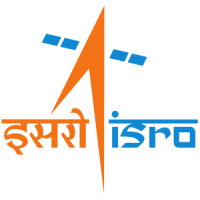/
TeLEOS-1 & Rideshares
Launch Success
Liftoff Time (GMT)
12:30:00
Wednesday December 16, 2015
Mission Details
Launch Notes
Commercial launch of 6 Singaporean satellites. Fourth stage re-ignition demonstrated successfully after payload deployment.
VELOX-II
The VELOX-II mission is a Singaporean experimental nanosatellite mission. The project is part of NTU’s Undergraduate Satellite Program, which provides an opportunity for engineering students to participate in a multidisciplinary hands-on space project.
Low Earth Orbit
1 Payload
13 kilograms
Galassia
Galassia is a 2U Cubesat developed by undergraduate students at the National University of Singapore (NUS). Galassia is the first NUS Cubesat. There are many educational and scientific objectives in this project. The educational objectives are for students to gain hands-on experience with real hardware and software integrations, to design and verify Cubesat system mechanisms, to test some in-house developed devices, and to work and integrate the two scientific experiments into the Cubesat.
Low Earth Orbit
1 Payload
3 kilograms
TeLEOS-1
TeLEOS 1 is Singapore's first commercial Near Equatorial Orbit (NEqO) Earth Observation satellite. It is built by ST Electronics (Satellite Systems). Operating at an altitude of 550 kilometers, the TeLEOS-1 offers 1 meter high resolution satellite imagery with an average revisit time of between 12 to 16 hours, enabling decision makers and users the convenient access to high temporal imagery and geospatial solutions, and response to time sensitive events, such as homeland security and border control, maritime situation awareness, and disaster monitoring and management around the equatorial belt.
Low Earth Orbit
1 Payload
400 kilograms
VELOX-C1
The VELOX-C1 mission is a Singaporean experimental microsatellite mission to study tropical climates. VELOX-C1 will use of a special technique known as radio occultation and advanced algorithms, to obtain weather data such as the upper atmospheric temperature, humidity and pressure, which are useful for long term climate studies. Radio occultation makes use of the radio signals transmitted from the GPS satellites 20,000 km above the Earth. Using specially-designed GPS receivers, VELOX-CI can detect these signals for a short duration, even if there is no line of sight due to the bending of these signals by the atmosphere.
Low Earth Orbit
1 Payload
123 kilograms
Kent Ridge-1
Kent Ridge 1 (KR 1) is a hyperspectral imaging microsatellite developed at the National University of Singapore in collaboration with Berlin Space Technologies (BST). Advances in Singapore based R&D in the field of Fourier transform recovery (FTR) enable micro satellites to carry hyper spectral payloads that work simultaneously in the VNIR (400-900 nm) and SWIR (900-1700 nm) bands, enabling multitudes of new applications in the monitoring of land, water and vegetation and thus will be useful to contribute towards the effort to prevent and manage such disasters in this region.
Low Earth Orbit
1 Payload
78 kilograms
Athenoxat-1
Athenoxat 1 (Athene Noctua Experimental Satellite) is a 3U Cubesat developed by Microspace Rapid Pte Ltd. of Singapore. Athenoxat 1 is to demonstrate the functionality of a night vision optical payload on a Cubesat Class Nanosatellite.
Low Earth Orbit
1 Payload
5 kilograms
Launch Site
Stats
PSLV
32nd
Mission
4th
Mission of 2015
Indian Space Research Organisation
50th
Mission
5th
Mission of 2015
2015
81st
Orbital launch attempt

